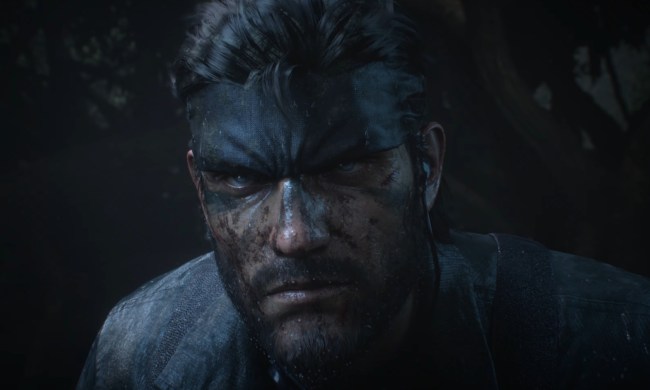There are two ways to remake a video game. On one hand, you can take the transformative route and reimagine a classic through a new lens. That’s a risky option that could tick off purists, but one that can result in a project that stands on its own rather than in another game’s shadow. Then there’s the much safer route: giving players as much of a 1:1 experience as possible for a more surefire win with a lower-legacy ceiling.
If you’re having trouble picturing the difference between the two, Konami is modeling exactly what that looks like. Its upcoming Silent Hill 2 remake is faithful to the original horror game, but feels like developer Bloober Team’s own bespoke spin on a classic. Metal Gear Solid Delta: Snake Eater, on the other hand, sits at the completely opposite end of the spectrum. Hardly a hair on its head appears to be touched.
That’s at least the sense I got after playing through an early version of Metal Gear Solid Delta’s opening 90 minutes. Those who were worried that Konami might bungle Hideo Kojima’s vision can rest easy: The remake almost feels petrified of enraging its staunchest fans. While that means that we’re all but guaranteed a great game, its lack of ambition does make me wonder what this version brings to the table outside of modern graphics.
Virtuous mission
What’s funny about demoing a faithful 90 minutes of Metal Gear Solid 3 is that the play session translates to maybe 10 minutes of actual hands-on gameplay, tops. Snake Eater’s opening is a long-winded one filled with exposition, Cuban missile crisis history lessons, and wordy tutorials. Those long cutscenes didn’t just give me a chance to remember how strange and wonderful Snake Eater’s story is; it gave me a lot of time to study the remake’s aesthetic changes. And there are less of them than you might think.

The biggest change is its visual overhaul, which makes the PlayStation 2 classic look more like a modern game. There are some subtle changes here, like the fact that you can now see damage build up on Snake’s body and uniform. The most notable departure from its predecessor is rebalancing the original’s yellow color tint that makes its forests look like they’re baking under a heat lamp. Instead, it opts for a less-stylized palette with a modern sheen. It’s not the kind of thing that new players will notice, let alone care about, but it does take a signature glow out of the image.
Aside from that change, Metal Gear Solid Delta sticks to the script. Cutscenes are glossier, but they’re shot-for-shot re-creations of their counterparts. Konami even resists the urge to overhaul level design now that it isn’t working with the PS2’s limitations. Rather than turning the original map into an interconnected jungle, it’s still a collection of bite-sized rooms split up by loading screens.
“We don’t want it to feel like we can’t make a Metal Gear game without some of the original staff.”
The more I play, the more I get the sense that Konami was sweating bullets when it embarked on this project. It seems aware that the idea of remaking a Metal Gear Solid game without Kojima’s involvement would put a target on its back. During an interview at the preview event, I asked producer Noriaki Okamura how much the remake team reached out to the original developers for guidance on the project. He notes that some of the original developers are still with Konami, some now in leadership roles, but talks around Kojima’s lack of input on the project.
“In order for us to do a faithful re-creation, we didn’t necessarily have anything critical or dire that we had to go back and ask any of the original staff about,” Okamura tells Digital Trends. “We didn’t feel that we had to get advice from them. For us, our goal is, with the team that we built right now, that we do want to make sure we can deliver a Metal Gear title … We don’t want it to feel like we can’t make a Metal Gear game without some of the original staff.”
It sounds blasphemous when he says it, but it makes perfect sense when you actually play the remake. There are no creative decisions happening here that one would need to run by a game’s original director to make sure they fit. The script is completely unchanged. In fact, the remake uses the original game’s voice acting and score. With those restrictions in place, Konami couldn’t really mess it up if it tried. The side effect of that is that you wind up with a game that looks modern, but still has characters telling Snake how to press the X button in exhaustive detail. It’s a bit of a mismatch, but it’s honest. This is unmistakably Snake Eater.
New controls, same game
While I mostly spend my demo in codex calls, I do get to test out Snake’s stealth toolkit as I work to rescue Soviet scientist Nikolai Sokolov. I go through a familiar sequence of events. First I shimmy up a tree to collect my backpack. Then I sneak past some guards in an open area. I get a quick gun tutorial when I have to shoot down a beehive and scare off some guards before testing all my skills in a small infiltration mission and pull Sokolov out of a heavily guarded room. If you’ve played the original, you’ll be able to do it all from memory.
What is different, though, is Metal Gear Solid Delta’s control scheme. The original release features famously rigid controls that can be a little tough to go back to today. To ease that pain point, the remake introduces a new option that makes it feel as smooth as any modern game. It all works without a hitch, allowing for more fluid play. In my first stealth encounter, I’m able to easily slide onto my belly, sneak up behind a guard, grab him with CQC, and toss his dazed body into the tall grass. On-screen tooltips make it easy to remember exactly to perform any action too, something that’s handy anytime I grab a guard whose throat I don’t want to accidentally slit.

Even then, Konami is still committed to preserving the original experience. While it wasn’t available during my demo, the full game will launch with a classic control scheme that stays true to the original PS2 version. If you’ve never played Metal Gear Solid 3 before, you can get 95% of the way to that experience with this version. Animal hunting, camouflaging, tree knocking, guard interrogating — every single aspect is here with hardly a change.
That’s great news considering that Metal Gear Solid 3 is an all-time great for a reason, but it begs the question: Why remake it at all then?
Konami’s version
When I ask Okamura about Konami’s decision to remake it, he stresses the idea that it was about passing on the franchise’s legacy: “We realized that there’s a whole new and younger generation of gamers that are not familiar with the series or have never played a single Metal Gear game before. We couldn’t stand to have this wonderful series be forgotten by the course of time.”
That’s a fine answer on paper, but one that doesn’t hold up to scrutiny. Just last year, Konami made Metal Gear Solid 3: Snake Eater widely available to all players as part of the franchise’s Master Collection. That package includes a relatively untouched port of the original game that’s available on most platforms, including Nintendo Switch. Young players who want to experience Snake Eater for the first time can already do that without buying a full-priced remake. Perhaps the implication is that young players can’t connect with older games lacking modernized visuals and controls. I’d like to reject that idea, but I’m sure Konami has more data on that than I do.
I can only call it as I see it. This isn’t so much a remake as it is Metal Gear Solid: Konami’s Version.

Just as Taylor Swift recorded nearly identical versions of all of her old albums to wrench ownership away from her old record label, this is Konami creating a version of Snake Eater that’s not permanently attached to Hideo Kojima. Konami and the director had an infamously sour falling out after the release of Metal Gear Solid V: The Phantom Pain which seemed to leave the series dead in the water. The publisher would try to carry on without him via 2018’s Metal Gear Survive, but a poor reception sent a harsh message about who fans felt was the mastermind behind the series. But what’s a publisher to do? Are you really going to let your most beloved IP die off because of one missing team member?
Metal Gear Solid Delta feels more like a business decision than an artfully motivated remake — at least so far. It’s an ultra-safe touch-up that’s more akin to an HD remaster. Its closest parallel is Sony’s Shadow of the Colossus remake, a project that put its focus squarely on bringing its visuals and controls up to modern standards. Is that a bad thing? No. If anything, it’s perhaps a better approach for game preservation. This version of Snake Eater feels the way you probably remember it feeling 20 years ago. But it’s OK to call a spade a spade too.

The more I speak with Okamura, the more Konami’s long-term objective beyond Snake Eater becomes clear. “Our mission with this new team that we’re building is to bring these games back to life,” he says. “We still have some of the OG staff with us at this moment. Now’s the time to do it and to hopefully build a new Metal Gear OG staff for the future.” If Konami wants any hope of keeping the franchise’s gears churning, it first needs to earn back some good will. What safer way to do that than creating a nearly identical replica of one of the best games of all time, letting new devs nail its fundamentals before taking a crack at their own original continuation?
Maybe it’s just easier to put the business headache of it aside and appreciate that David Hayter’s delightfully hammy one-liners are returning in their untouched glory. For most players, I imagine it’ll be that easy to enjoy what’s shaping up to be a perfectly faithful, if clinical, remake.
Metal Gear Solid Delta: Snake Eater is currently in development for PS5, Xbox Series X/S, and PC.




